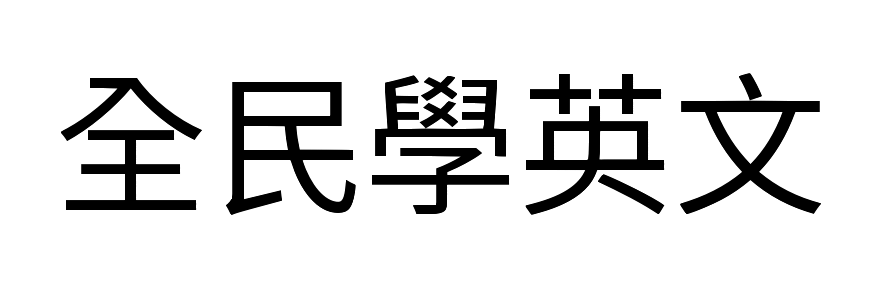
英文介系詞你都知道怎麼用了嗎?《一本突破中式英文盲點》這本書的作者,解釋了所有英文介系詞的相關用法,趕快學會吧,從此不再被介系詞所困擾。
英文介系詞介紹
介系詞(preposition)的字源可視作為:「pre+position」,意思是在什麼之前。實質上,介系詞必在受詞之前,換言之,介系詞不能單獨存在,介系詞之後必有受詞,而受詞必定是名詞(包括代名詞、動名詞、名詞片語、名詞子句),例句如下:
I haven’t seen you for ages. → 介系詞+名詞
I’ll go with you. → 介系詞+代名詞
My mom has difficulty in sending SMS. → 介系詞+動名詞
He is stiff from yesterday’s long practice. → 介系詞+名詞片語
You must pay attention to what I say. → 介系詞+名詞子句
介系詞的文法功能在於顯示「兩個名詞之間的相互關係」,這種相互關係大多數是指時間與位置,其他的則如屬性、方法、因果等。
例如下面兩個句子中的介系詞in, to, of,其中,in, to 表示位置(或時間)的相互關係,of 表示屬性:
例:The car in which the superstar arrived to the party is an Aventador.
超級巨星參加派對的汽車是Aventador。
例:The pop star is in the middle of her worldwide solo concert tour.
英文介系詞常見錯誤用法
介系詞雖然都是些小字小詞,但大多沒有一定的規則,許多人將介系詞視為八大詞類中最不易掌握與運用的前茅之一。常見的介系詞錯誤用法大致分為三類:
1. 用錯了介系詞
Jennifer was married with Brad. → with 應更正為to
I’ll contact you with email. → with 應更正為by
I found a solution of your problem. → of 應更正為to
This is the tallest building of the world. → of 應更正為in
The surgeon was accused for negligence. → for 應更正為of
The sun rises from the east and sets to the west. → from, to 更正為in
第一句的is married to 表示婚姻狀態,如果是She is married with 3 children. 則表示她結婚了而且有3 個小孩。最後一句或也可寫成The sun rises in the east and moves from east to west.
2. 該用而未用介系詞
He asked( )a coffee. → 填入for
Do you believe( )God? → 填入in
I listened( ) the radio last night. → 填入to
Whiners are usually not easy to deal( ). → 填入with
Did you hear( )the renovation project? → 填入about
The manufacturer promises quality you can depend( ) → 填入on
3. 不該用而多用了介系詞
下面例子中的介系詞依序是to, at, for, into, about, with, 它們都是多餘的,都要刪除:
Where are you going to? → 刪除to
Where is your school at? → 刪除at
I appreciate for your help. → 刪除for
She is entering into the kitchen. → 刪除into
They are discussing about the news of the day. → 刪除about
I tried to contact with him at his office, but he wasn’t in. →刪除with
discuss 相當於talk about,所以discuss 後面直接加受詞即可,其他類似的動詞如mention, consider,也都是直接加受詞。contact 也是直接加受詞(人)。
如前所述,介系詞表達名詞相互間的關係,位置及時間應是最常用的相互關係了,以下兩節將討論位置及時間介系詞。
英文介系詞–位置
表示位置關係的介系詞,如at, above, across, below, beside, between, by, from, in, in front of, into, on, onto, near, through, toward, under 等。
其中,有些介系詞的意義很清楚,如above(在上面)、behind(在後面)、by(在旁邊)等,很容易了解與運用。但是,有些則容易混淆,如arrive in 表示到達一個城市、國家,arrive at 則是到達一個定點(小的地方,buildings),舉例:
He arrived at the Louvre Museum an hour ago.
He arrived in Paris yesterday.
at, in, on 可說是日常生活中最常用也容易混淆的三個位置介系詞了,下表有幾個規則可幫助我們了解它們的用法,是幫助記憶的一種「概念性的歸納」:
如果概略地以大小來說,at 最小,on 較大,in 最大。以住址為例:
Steph lives at 56 Park Avenue. → at:特定地址
Kevin’s house is on Grand Boulevard. → on:街道
LeBron lives in Riverside County. → in:市縣省國
Kawhi lives at 18 Main Street, in an apartment, on the eighth floor.
還有一些at, on, in 的片語則較抽象,譬如:
in a book, in a movie, in a newspaper
on TV, on the radio, on the internet
如果要形容一個人在某個交通工具裡,常用到介系詞on 與in。幾乎只有car, taxi 用in,其他都用on。
這主要是習慣用法,或者可以說,大型的或公共的交通工具用on,小型的或私人的交通工具用in,如:
on a boat, on a bus, on a train, on a plane, on a ship
in a car, in a taxi
如果是說坐什麼交通工具去某處,則用介系詞by,如by car, by train, by plane, by boat 等。
英文 介系詞–時間
表示時間關係的介系詞,如after, before, by, during, for, since, to, until, within 等。
如同位置介系詞,有些時間介系詞的意義很清楚,如after(之後)、before(之前)、since(從∼起)等,很容易了解與運用。
但是,有些則容易混淆,如常用的at, in, on,下表也是幫助記憶的一種「概念性的歸納」:
如果概略地以時間的長短來說,at 最短,on 較長,in 最長。和幾乎所有的英文規則一樣,都會有很多例外、很多灰色的地帶,以早上、中午、晚上為例:in the morning, in the afternoon, in the evening,但是,卻用at night。
所以,最重要的 還是:習慣用法。講到特定節日,可以說on Christmas Day, on New Year’s Day,也可以用at Christmas, at New Year。
另外,on the weekend 是美式,英國人則用at the weekend。
如果日期之前已有時間形容詞,如every, last, next, this 等,則不需再加on, at, in,如:
Let’s meet next Tuesday.
They got married last December.
We sing Auld Lang Syne every New Year’s Eve.
幾個容易混淆的英文介系詞用法
among vs. between
among:兩個以上
between:兩個
例句:The bees are buzzing among the flowers.
They tried to break up the fight between Justin and Drake.
beside vs. besides
beside:在什麼的旁邊
besides:除……之外
例句:Would you come and sit beside me?
He wants to learn other languages besides English.
by vs. until
by 表示:在某時間點之前
until 表示:直到某時間點
例句: You can have the bike until tonight, but you must return it by 12:00.
except vs. besides
except:除……之外,都不
besides:除……之外,也都
例句:All of us will go except Vladimir. → Vladimir 不去
All of us will go besides Vladimir. → Vladimir 也去
in vs. into
in:狀態,是靜態的
into:動作,隱含動態
例句:The silverware is in the cupboard.
Chloe drove her car into the garage.
to vs. at
例句:She shouted to me. → 她叫我(因為距離遠,聲音大些)
She shouted at me. → 她因為生氣而對我大聲叫
attend vs. attend to
attend:參加、出席
attend to:照料、處理
例句:He regularly attends yoga classes. → 參加
He’ll attend to the problem tomorrow. → 處理
in time vs. on time
in time:即時
on time:準時
例句:They managed to get to the airport in time.
Why is it that the buses never run on time?
lack vs. lack of
lack 當動詞時,直接加受詞
lack 當名詞時,需用lack of
例句:This soup lacks salt. → 動詞
The lack of salt made the food tasteless. → 名詞
英文 /介系詞,連接詞,副詞
有的介系詞也同時是從屬連接詞,如before, after, since, until,如何判斷是介系詞還是從屬連接詞呢?
要記得詞類的區別端視它們在句子中所擔任的功能:介系詞表達一個名詞與另一個名詞間的相互關係,其後必接名詞(包括動名詞);從屬連接詞則帶領著從屬子句,連結獨立子句,如:
He stood before the wall. → before 是介系詞
Let’s eat before we go. → before 從屬連接詞
I have learned a lot since coming here. → since 介系詞
I have learned a lot since I came here. → since 是從屬連接詞
有些介系詞也可以是副詞,如above, on, out, up 等,如:
His house is half-way down the hill. → down 是介系詞
The computer broke down. → down 是副詞
The work is in progress. → in 是介系詞
Please chip in with your comments. → in 是副詞
當down, in 是副詞時,其後就不必跟著受詞。副詞是內容字,讀的時候要加重;當它們是介系詞(功能字)時,要輕讀。
英文/ 介系詞to+Ving
單字to可以用作介系詞,也可以用作不定詞的標誌,兩者在文法上有
極大的區別:
介系詞的後面+名詞(動名詞)
不定詞的後面+原形動詞
不定詞to+原形動詞是最常見的用法,我們非常習慣:
We decided not to go out.
Do you swear to tell the truth?
我們非常不習慣to+動名詞,這時候的關鍵點是:to 是介系詞。通常有下面幾種情形:
1. 某些以to 結尾的phrasal verbs
如:admit to, come down to, confess to, object to, resort to
I’m really looking forward to seeing what life brings to me.—Rihanna
2. 某些 形容詞+to的組合
如:be accustomed to, be addicted to, be committed to, be dedicated to, be devoted to, be opposed to, be used to, get used to這些片語中的accustomed, addicted 等是形容詞(過去分詞)
We love life, not because we are used to living but because we are
used to loving. —Friedrich Nietzsche
3. 某些 名詞+to的組合
如:alternative to, addiction to, dedication to, commitment to, devotion to, reaction to 等
His addiction to surfing the Internet is a problem.
有個很好的測試法可以如何決定to 之後該用原形動詞或是動名詞:先在to 之後加上一個名詞(如something),如果句子合乎文法邏輯,就用動名詞;如果不合邏輯,就用動詞原形。
如:
I am used to(something). → 合。加動名詞
He might object to(something). → 合。加動名詞
I wanted to(something). → 不合。加原形動詞
I used to(something). → 不合。加原形動詞
提醒:to + gerund 的前提是to 是介系詞。另外,當to是介系詞時,其後也都可以加名詞(代名詞等)
I’m hopelessly devoted to you.
—Olivia Newton John
(lyrics from “Hopelessly Devoted to You”)
以上內容由時報出版授權刊登,未經允許請勿轉載。
◎更多精彩內容,請見:《一本突破中式英文盲點》
除了上面文章內容,你還可以參考下方更多相關英文教學。
更多英文文法
如果你喜歡學習各種英文文法、英文片語、口語英文、英文單字等等,歡迎追蹤全民學英文的 FB 粉絲專頁、Instagram,以及Line 官方帳號。



